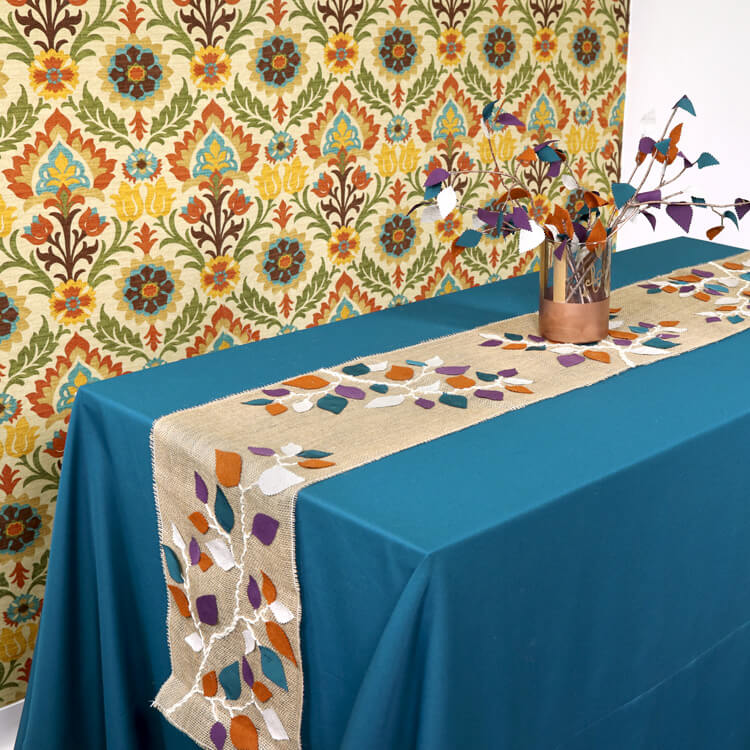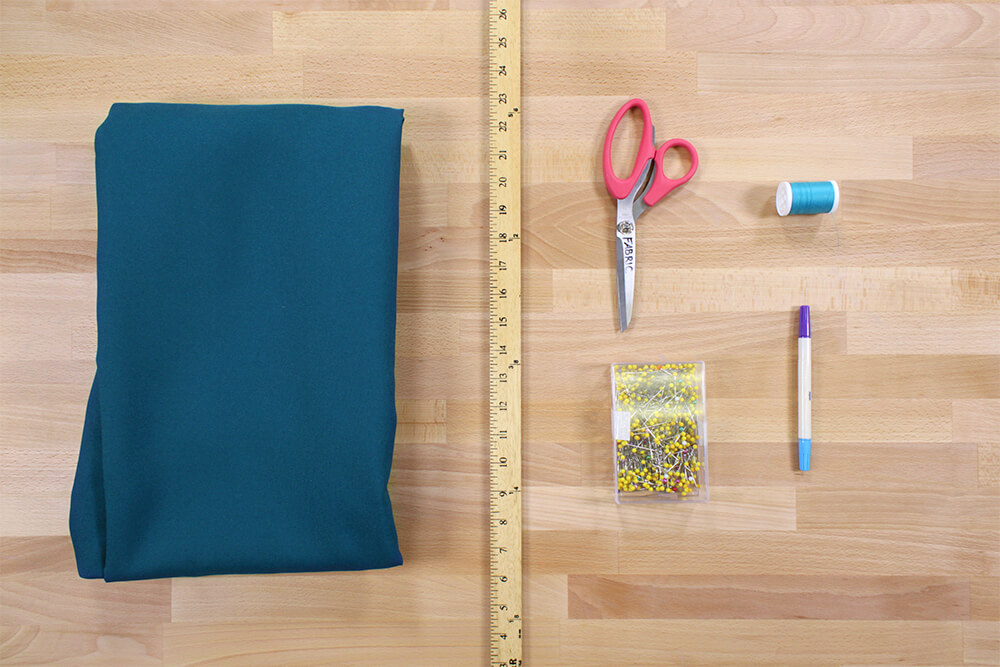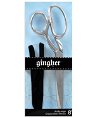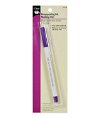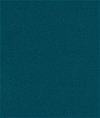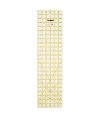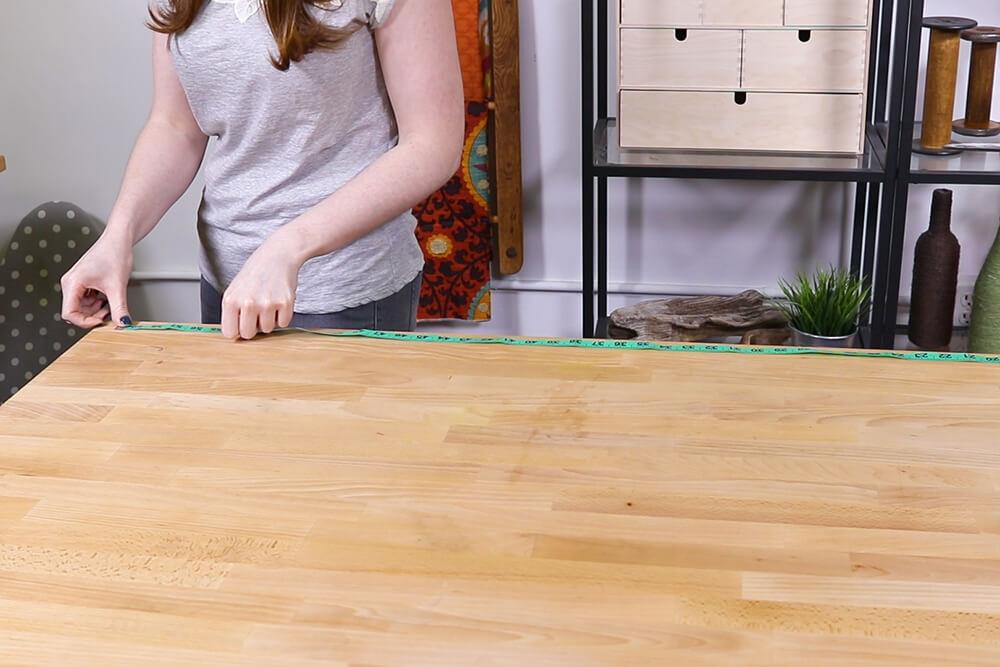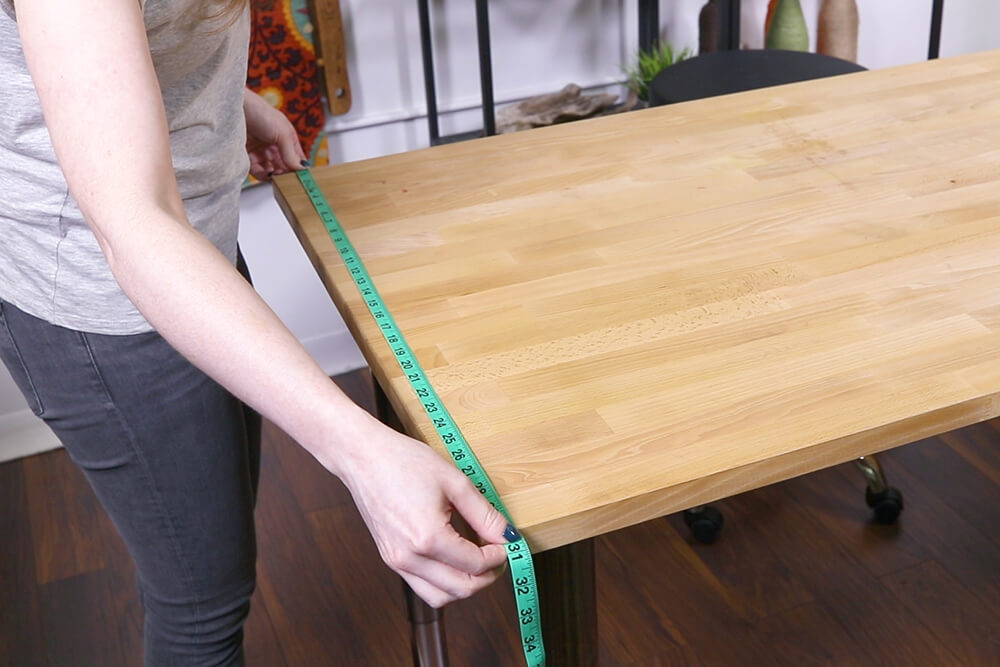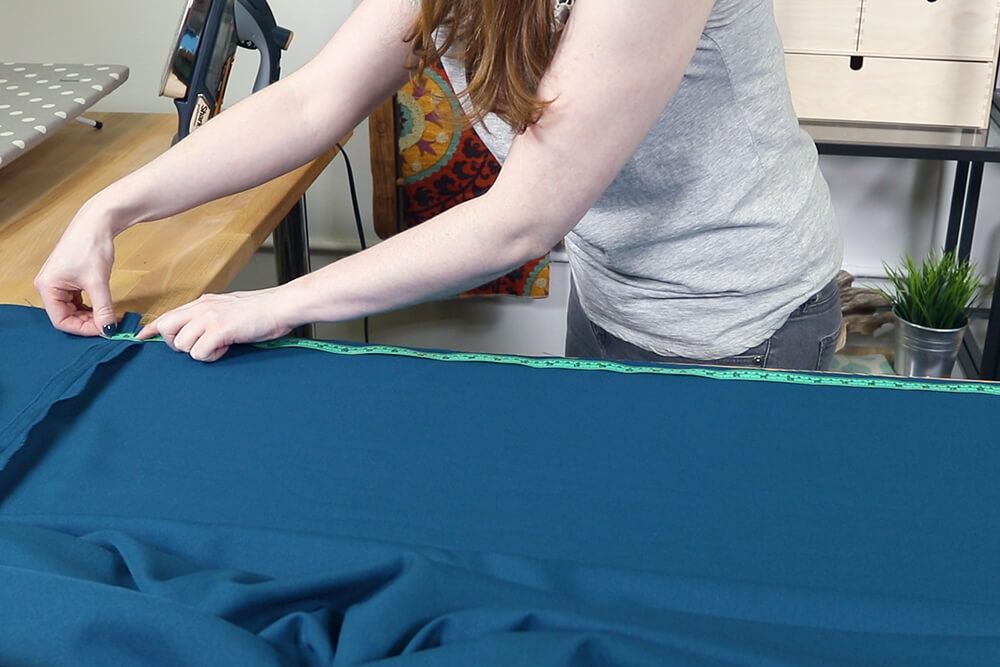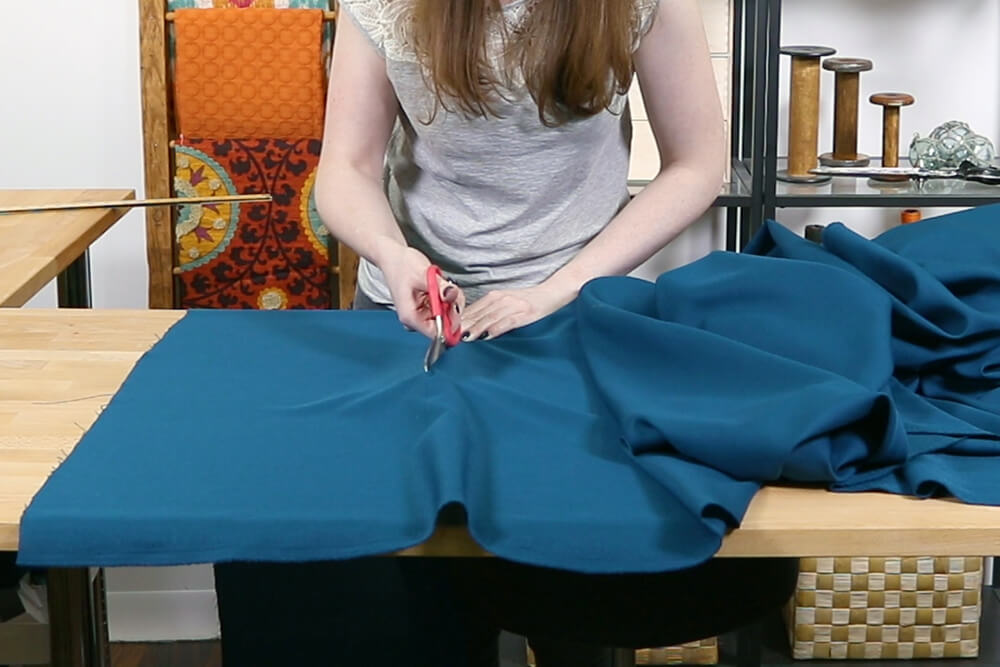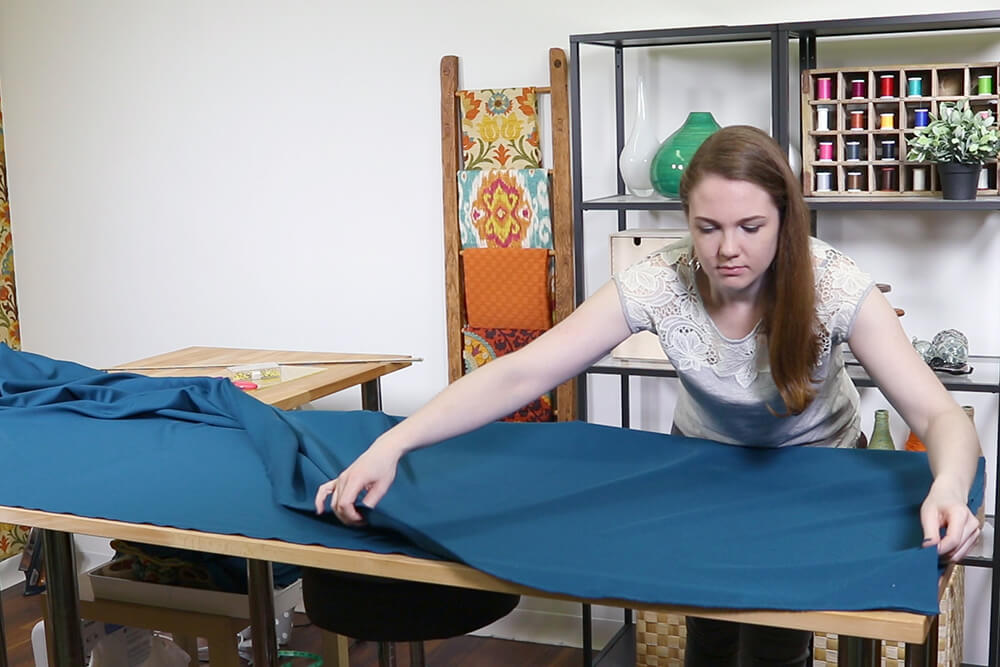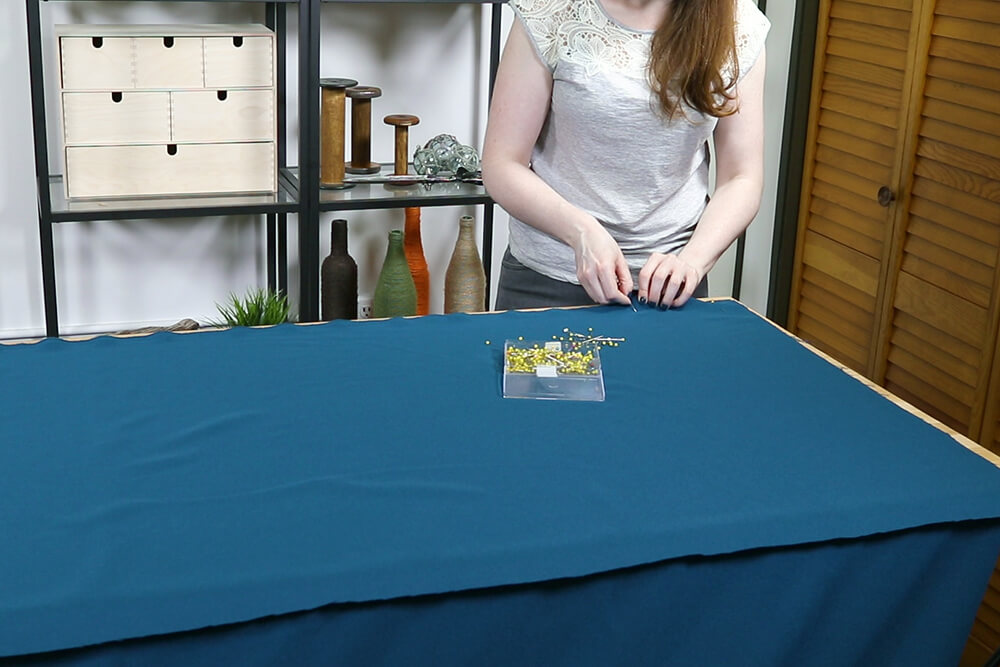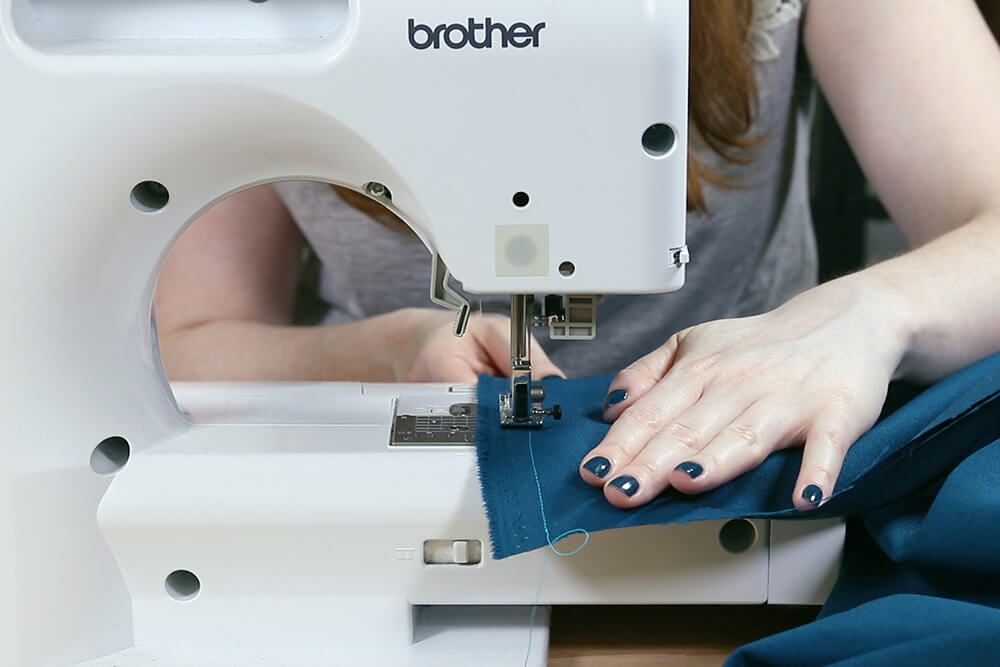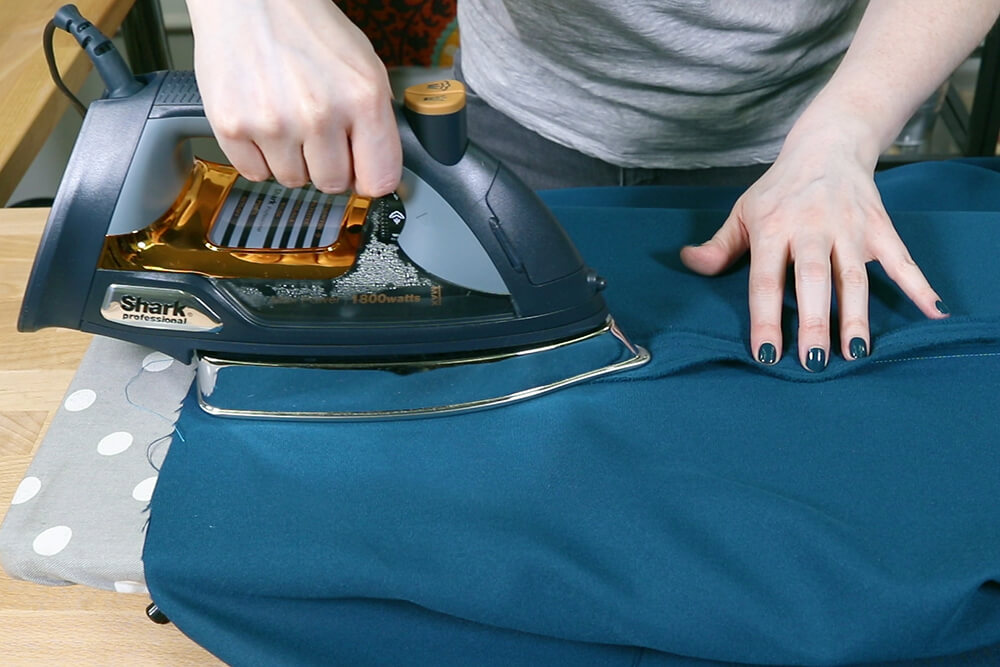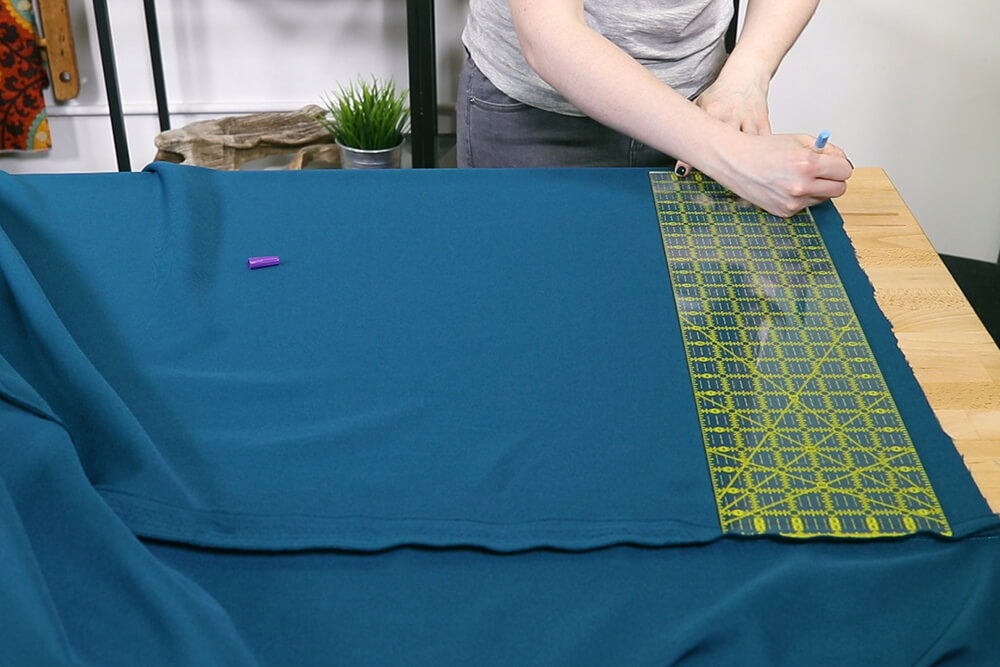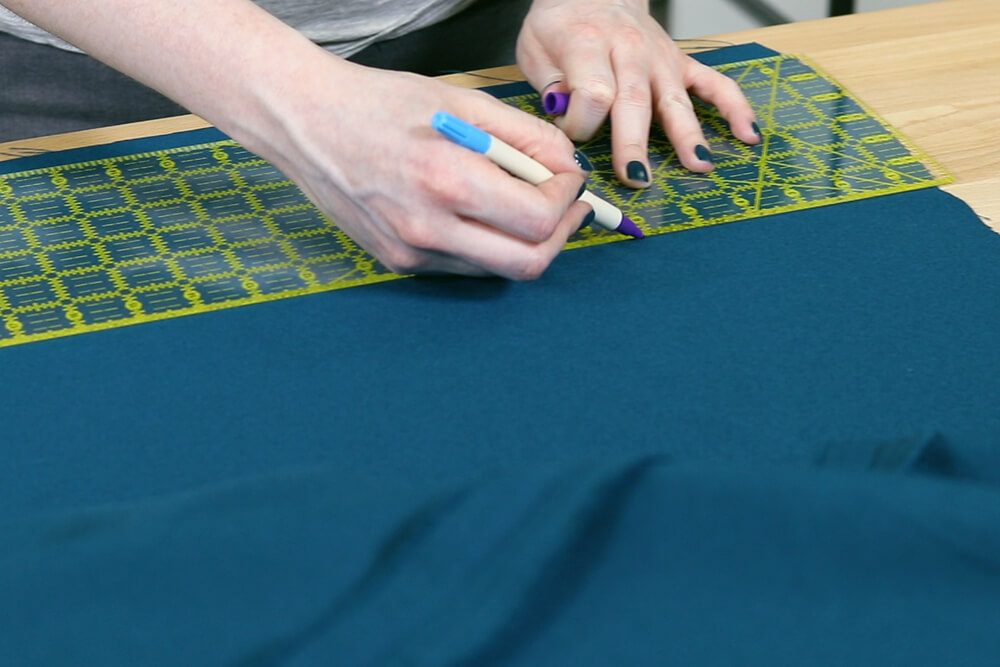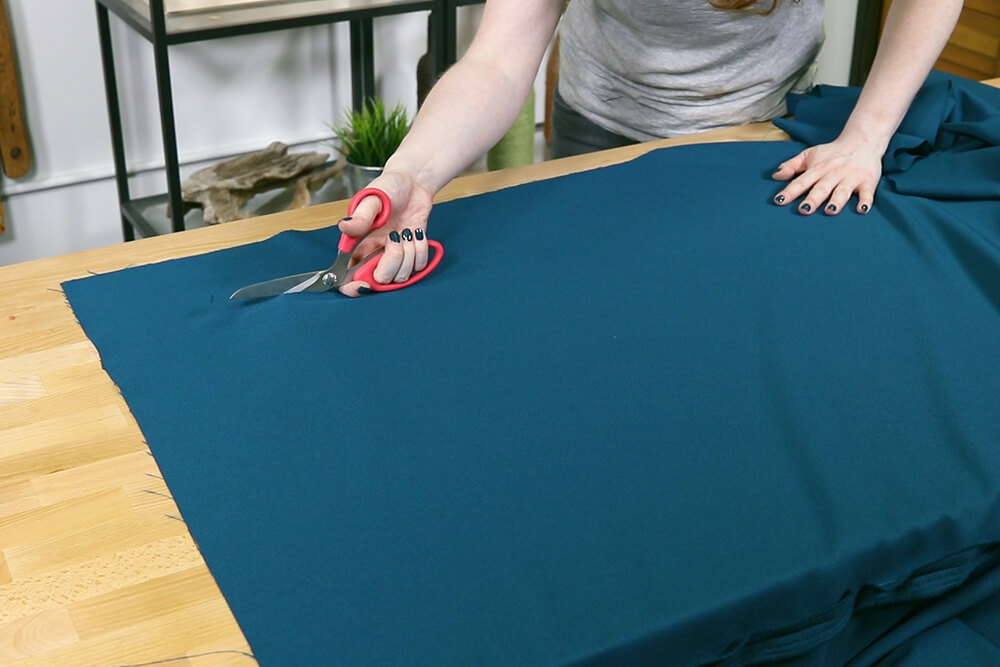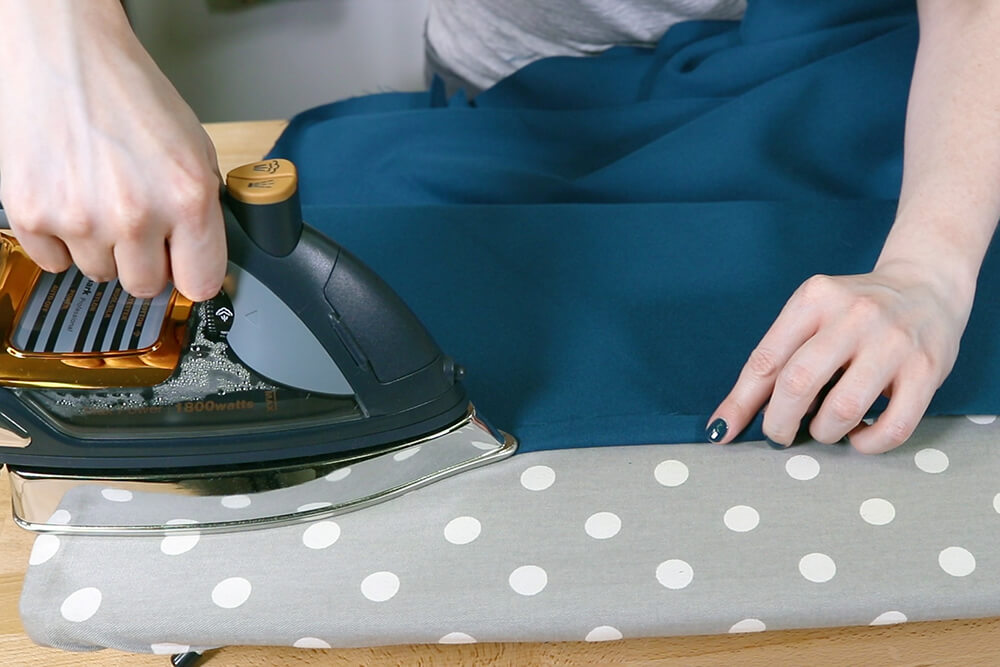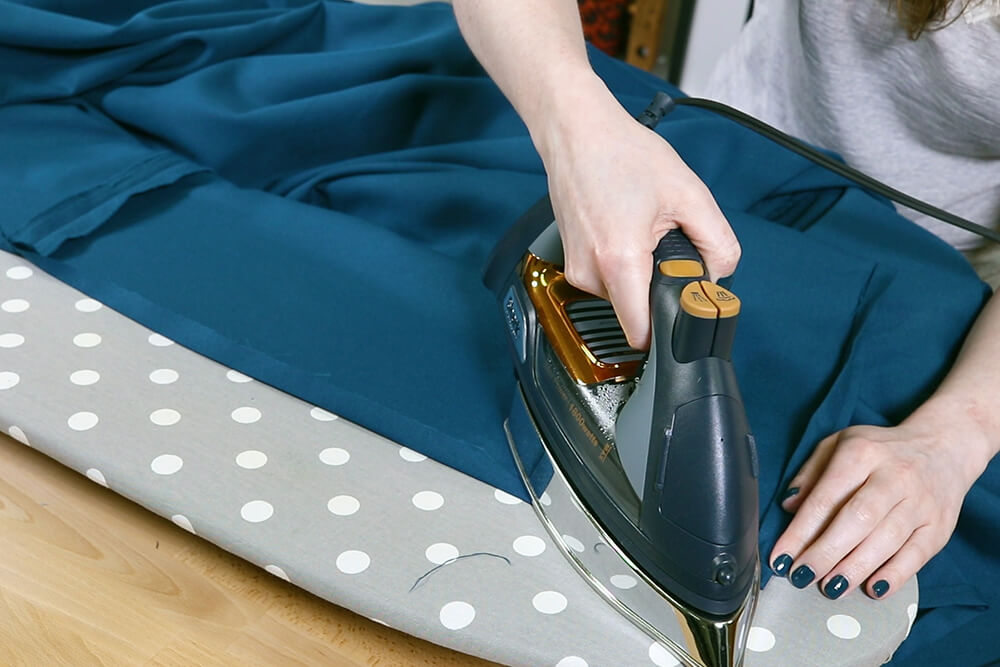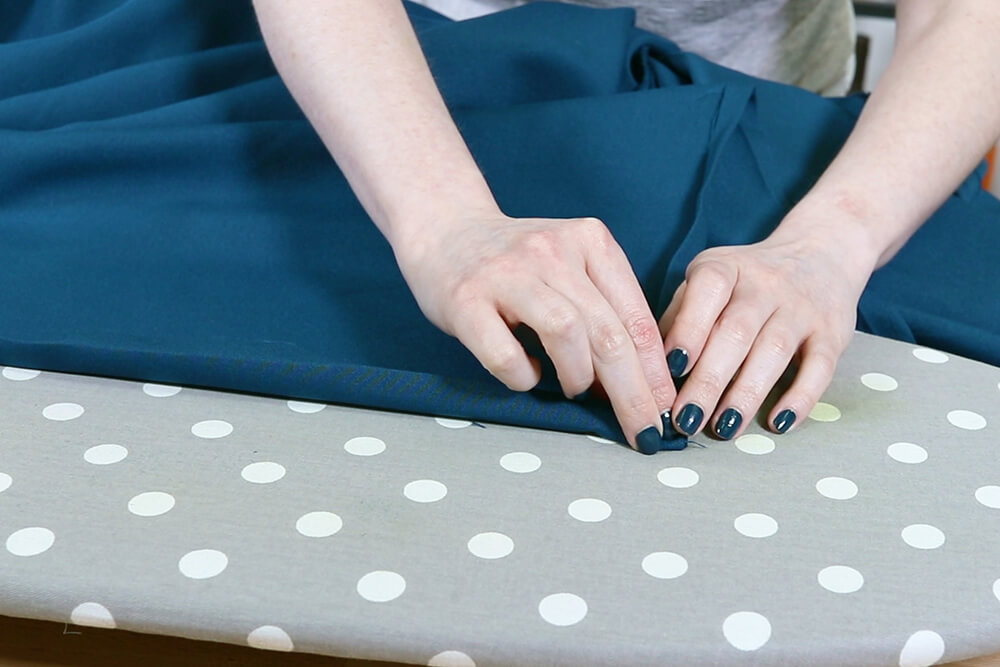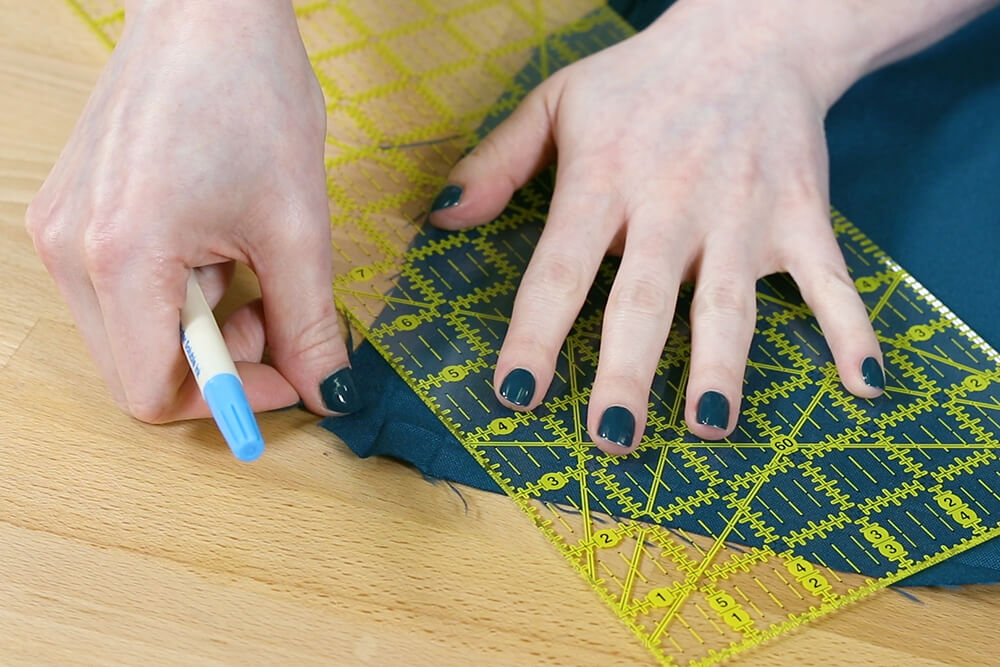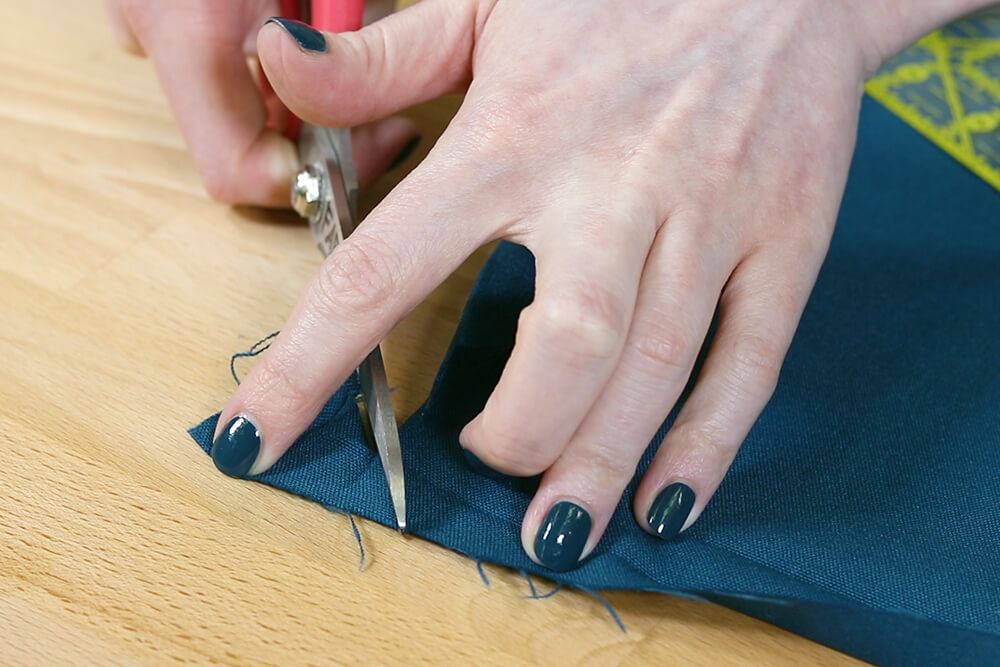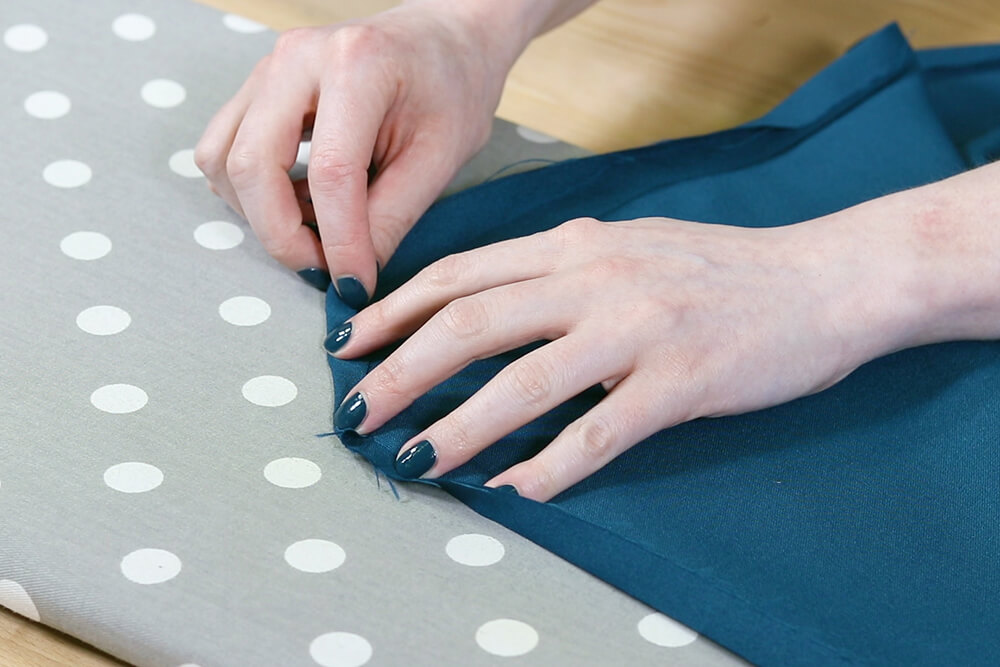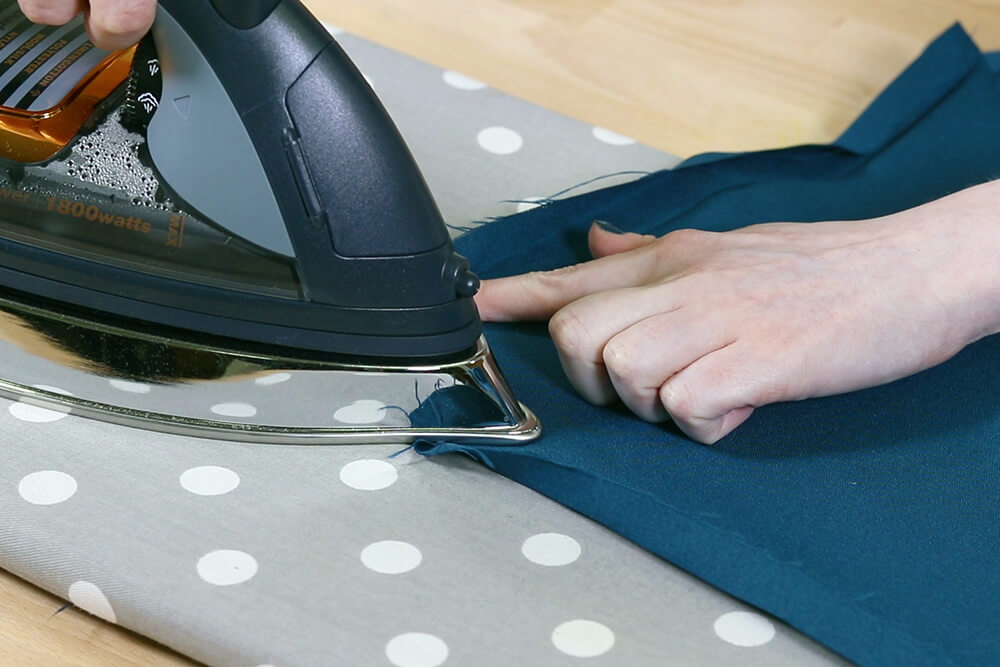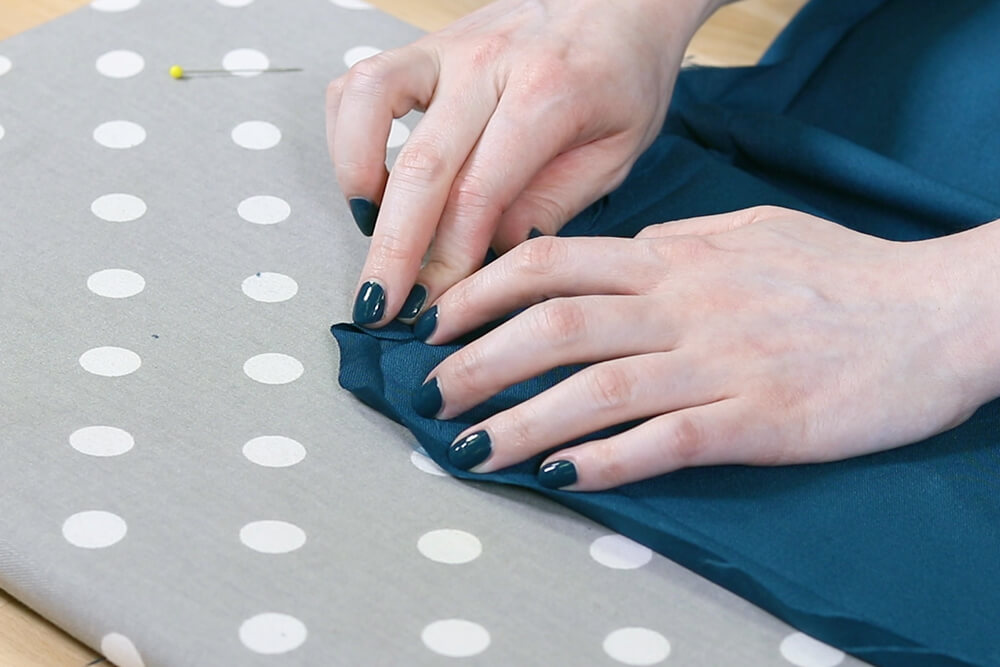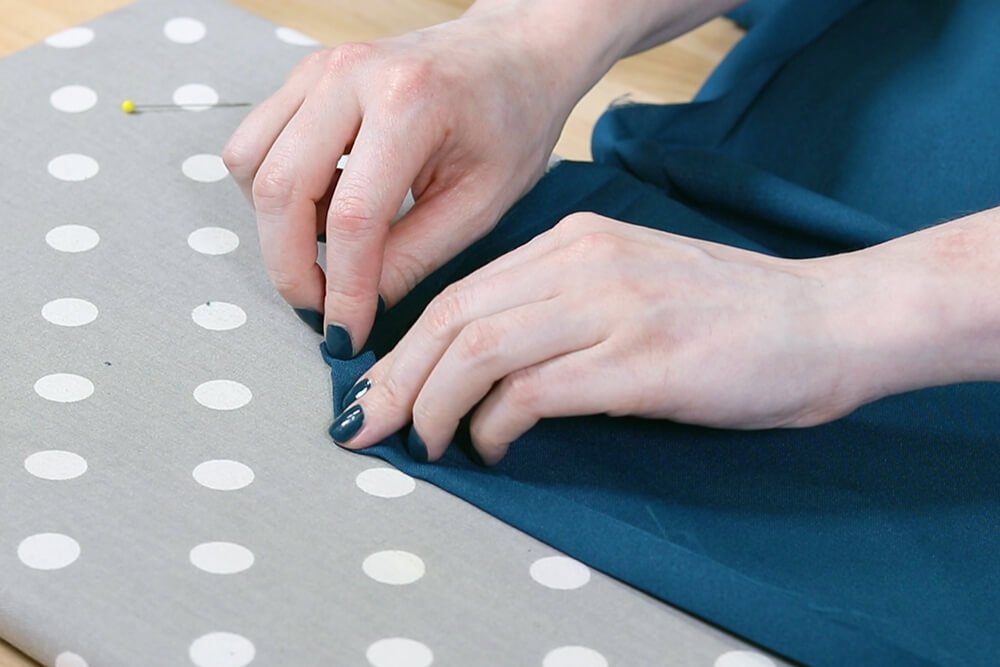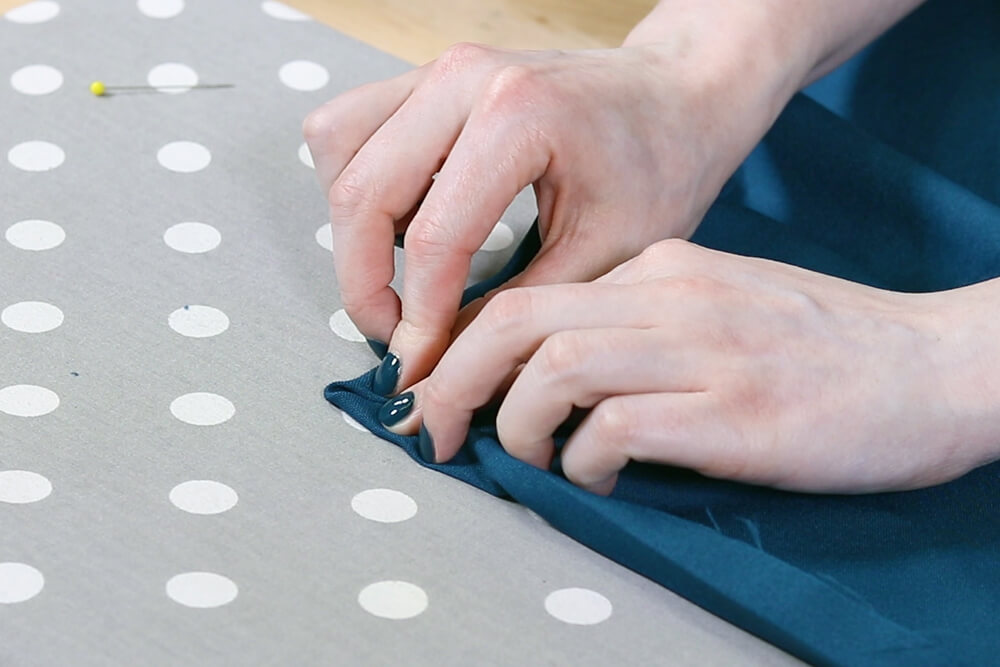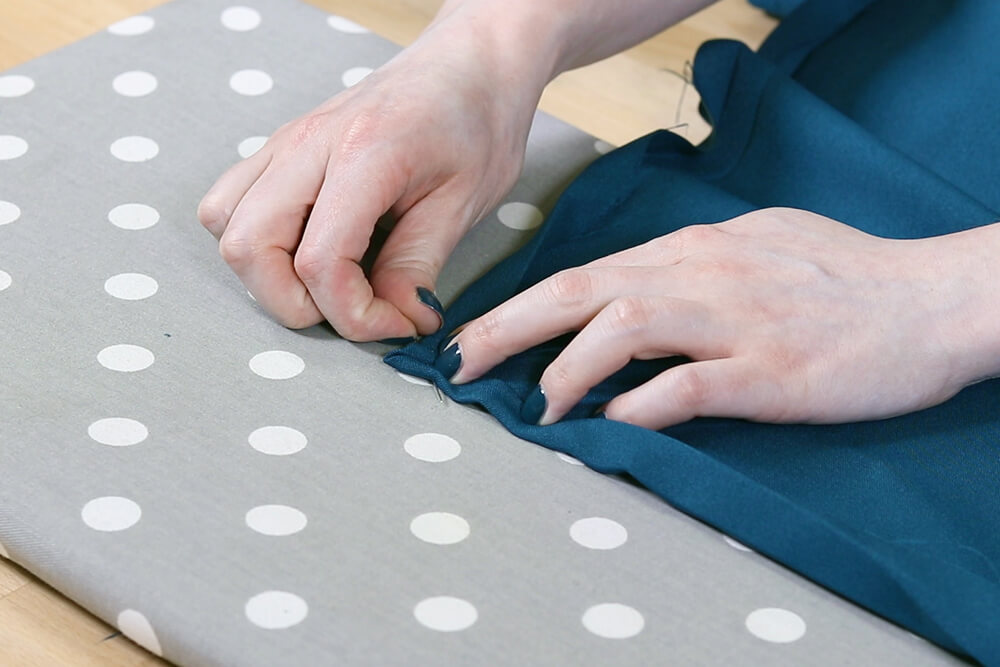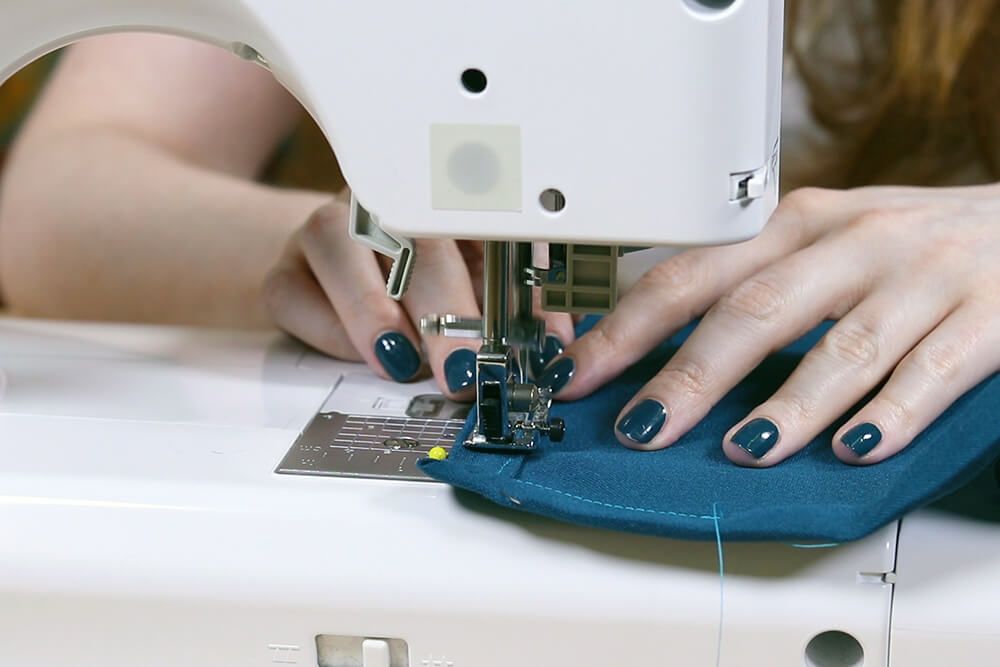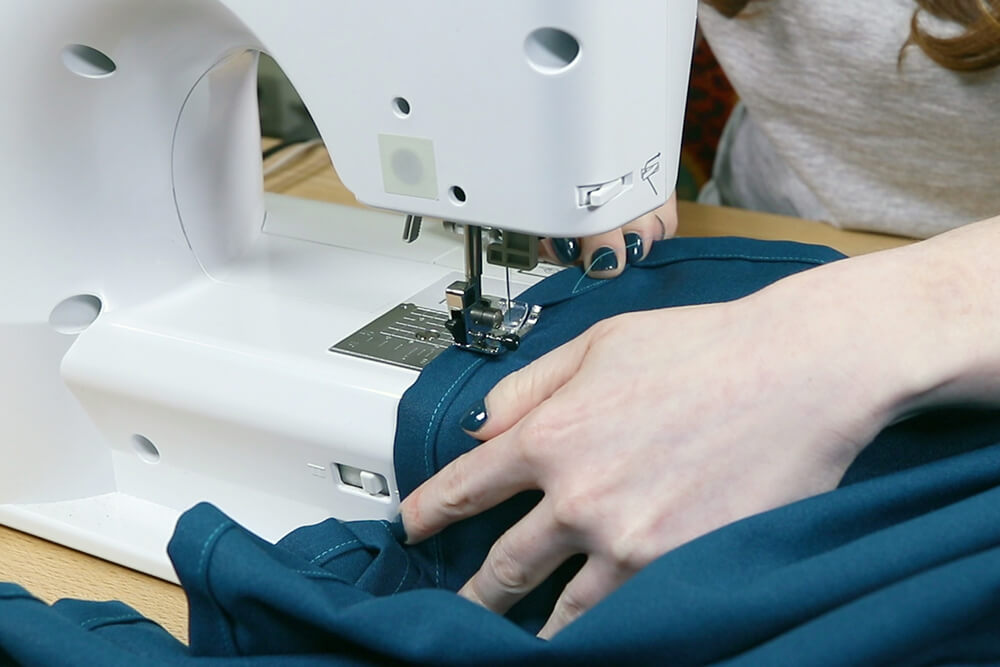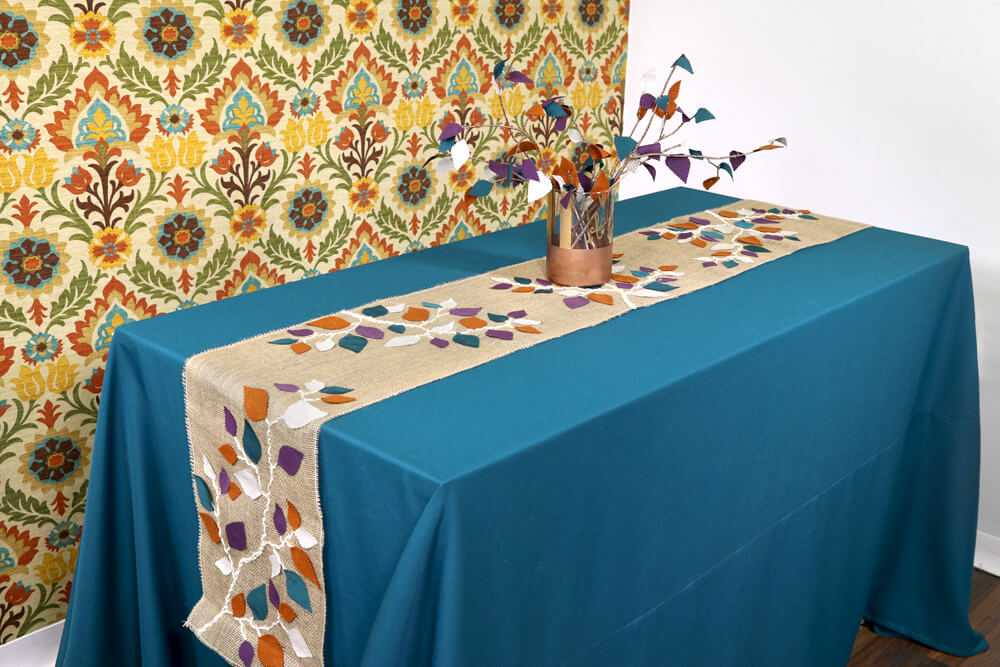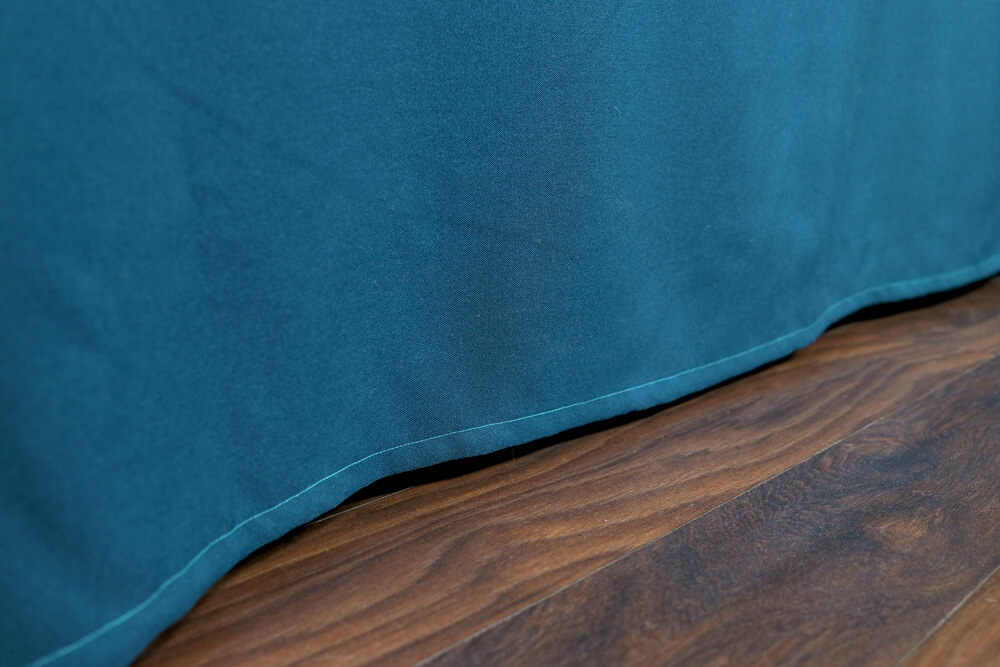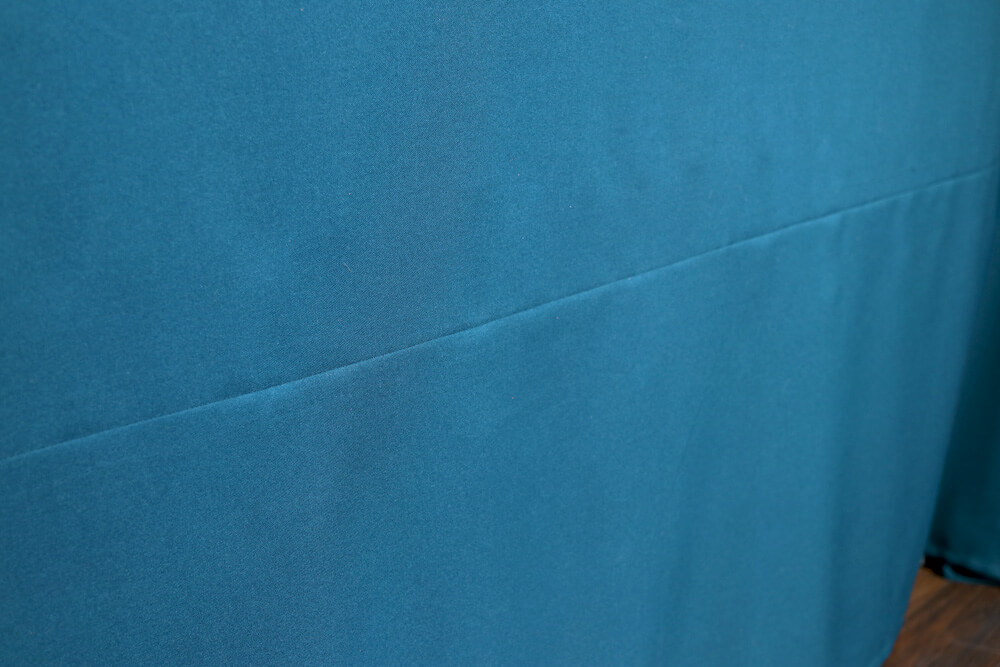How to Make a Tablecloth
- By Clara
- Beginner
By making your own tablecloth you can get exactly the look and size you want.
You can make tablecloths out of many different fabrics. Gingham, oilcloth, and flannel backed vinyl are great for casual eating or themed parties. For lightweight tablecloths, try broadcloth or cotton prints. Linen is classic and works for many styles and many events. Burlap is popular for rustic weddings. Sequins, lace, satin, and other dressy materials are perfect for tablecloths and overlays at formal events.
I’m going to make a rectangular tablecloth for this table out of poly poplin, which is durable and wrinkle resistant.
Want to get the printable PDF instructions?
Materials
Video
Instructions
Step 1: Measure & cut fabric
See Measuring Yardage for a Tablecloth for more information on this step, including diagrams. It also explains how to figure out how many yards you’ll need to buy.
First, decide what you want the drop length to be. This is the distance from the edge of the table to where you want the tablecloth to end. Drop lengths are generally about 10 to 12 inches for everyday use or they can go all the way to the floor for a more formal look.
I’m going to make a floor length tablecloth for this table. (Just be aware that the corners will pool on the floor with long tablecloths like this one.)
Measure the length and width of the table and the height if the drop will be floor length.
This table is 61” long, 30” wide, and 36.5” tall. I’ll make the drop 36” so it’s a little off the floor. Normal table height is about 30 inches.
Finally, you have to know if you need a hem and if so, what size. I’m going to do a ½” double folded hem.
Calculate the width of the tablecloth:
Table Width + (2 x Drop) + (2 x Hem) = Total tablecloth Width
For my table that’s 30” + (36” x 2) + (1” x 2) = 104”
Calculate the length of the tablecloth:
Table Length + (2 x Drop) + (2 x Hem) = Total tablecloth Width
For my table that’s 61” + (36” x 2) + (1” x 2) = 135”
If your fabric is wide enough for the tablecloth, simply cut 1 piece to the total length and width and move on to hemming in step 3.
If your tablecloth will be wider than the width of your fabric, you will need to cut more than one piece and sew them together.
This fabric is 60 inches wide and the total width is 104”, so I need to use 2 widths of fabric.
Instead of having a seam down the middle, it looks better to have a full width panel in the center with two narrower pieces on the sides.
I’m cutting two pieces of fabric to 135” in length. Cut one of the pieces in half lengthwise.
Step 2: Sew fabric together
If you have a patterned fabric that you want to match up, see our tutorials on making a duvet cover or box pleat curtains to learn how.
Line up the selvedge edges of the middle panel and one of the narrower pieces and pin together. If your fabric has a right and wrong side, make sure the right sides are facing each other.
Sew with a ½” seam allowance.
By putting the selvage edges together, there’s no need to finish them further because it won’t fray. If you do need to finish the edges, use a serger or a zig zag stitch on your sewing machine.
Repeat the pinning and sewing on the other side to attach the other narrow piece.
Iron the seams open.
Measure the width of the middle piece and subtract that from the total width, then divide by 2. This is how wide the narrow panels should be.
For me, that’s 104 – 59 = 45 / 2 = 22.5
Mark this distance from the seam in several places and connect the marks.
Cut off the extra fabric along this line.
Do this for both of the narrow panels.
Step 3: Hem the tablcloth
I’m doing a ½” double folded hem, but there are lots of other hems you can do, like a blind stitch hem or use fusible bonding tape. Some fabrics, like oilcloth, don’t need to be hemmed.
Fold the edge of your fabric in ½” and iron. Then fold it another ½” and iron again.
Iron all the way to the corner then fold and iron the other side while the first is still folded.
It looks best to do folded or sewn mitered corners. I’m going to do the folded mitered corner because it’s a little simpler. See How To Sew a Mitered Corner to find out how to do a sewn corner.
Unfold the corner and you’ll see a grid created by the creases. Draw a diagonal line through the middle square and cut.
Fold in the sides once, fold the diagonal part you just ironed, then fold in the sides one more time. Pin the corned in place. Repeat for the other corners.
Sew around the entire hem close to the inner fold and pivot at the corners. Make sure to backstitch at the beginning and end. The tablecloth is now complete.
We also made a burlap table runner, placemats, linen napkins, silverware holders, and a centerpiece to go along with this tablecloth. You can find these tutorials here.
Shop Poly Poplin for your tablecloth here!

